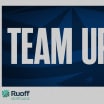About a month ago -- heck, a week ago -- there was a conventional wisdom among hockey experts.
The Blue Jackets were going to have to trade either Artemi Panarin or Sergei Bobrovsky -- or even both -- rather than lose them to free agency at the end of the season.
Of course, at this point, it's known the Blue Jackets went the opposite direction. General manager Jarmo Kekalainen and the brain trust went the other direction, choosing to keep both Panarin and Bobrovsky while adding Matt Duchene and Ryan Dzingel as well as depth in Adam McQuaid and Keith Kinkaid.
ANALYSIS: Blue Jackets made the right calls at trade deadline
Kekalainen: Columbus embraced opportunity without mortgaging future

To some, it is an incredible risk, especially considering both Duchene and Dzingel are unrestricted free agents themselves at the end of the season. To others, giving up what the Jackets gave up -- prospects Vitali Abramov and Jonathan Davidsson as well as at least one first-round pick and two second-round picks -- was a bounty. To others, whether the moves were good ones is a conditional proposition -- if Columbus can't get past Tampa Bay and win the Stanley Cup, it will be all for naught.
But there are plenty of reasons to argue the Blue Jackets made the most logical moves they could make at the deadline. Here's an analysis of why.
TRADE UPDATES: Read all about the Jackets' moves at the deadline
On Bobrovsky and Panarin:The contention that the team had to deal both of these players rather than lose them July 1 misses a few major points.
First off, the phrase "lose them for nothing" is a bit of a misnomer. The Jackets will have received exactly what they asked for from Panarin and Bobrovsky -- playing out their contracts to the best of their ability as two of the better players on the team.
The two have been consistently praised by teammates and coaches alike for playing their hardest this season, and it would be hard to argue, with Panarin leading the team in scoring and Bobrovsky having given up just 16 goals in his last nine starts. No less an authority than Cam Atkinson has called the two the team's best players in recent interviews.
Drive In with Kekalainen on NHL Trade Deadline Day
The entire point of acquiring good players is to win games, and the Blue Jackets will have received the most out of Bobrovsky and Panarin no matter what happens come July 1. Bobrovsky will have won the Vezina Trophy twice in his time with the Jackets. Panarin was acquired to give the team a game-breaker in what appeared to be a two-year window to make some postseason noise, and to give up on that window halfway through would have been to have undone the entire point of the original trade.
And if the two do leave after the season, Columbus will have nearly $13.5 million of cap hit off the books, money the Blue Jackets will be able to use on their own free agents-to-be and on the market.
There's also this reality -- getting a deal that would be worth it for either Panarin or Bobrovsky would have been extremely difficult, and Kekalainen said after the deadline passed that no one came close to making such an offer. The Blue Jackets weren't going to give up on another season of playoff contention. Any team interested in acquiring them likely wouldn't have been able to -- nor would it have wanted to -- deliver assets now that rival the two players in talent, and any draft picks would have their own uncertainty attached, not to mention years away from contributing.
Kekalainen said he would have to be wowed to make a deal involving the two. In the end, he was not, and chose to make a run at this season when he knew he'd have their services. If there was ever a time to make an aggressive move forward, it was with these two players on the roster.
Picks:Columbus now finds itself short of draft picks in the upcoming three drafts; the team currently has just two in its possession for the 2019 draft -- a fourth-round pick and a seventh-rounder.
In 2020, a second-round pick (traded for Dzingel) and a third-round pick (traded a year ago for Ian Cole) are already gone, and the first-round pick will go to Ottawa if Duchene re-signs.
This is, of course, a lot of picks to deal early in upcoming drafts, and draft picks are the lifeblood of any organization. But there are some caveats.
First, with the Jackets playing to win this year, the upcoming first-round pick will likely be in the latter half and maybe even latter third of the opening round. Once you're outside the top 10 or 15 of any draft, the talent drops off, and sure things simply aren't there.
According to this analysis by TSN in 2017
, any pick outside of the top 15 picks has more than a 50 percent chance of becoming a fourth-line player or worse.
As for dealing the second-rounders, well, think of it this way: When you draft a second-rounder, someone like Ryan Dzingel is what you hope to get. The last six rounds of the draft are such a crapshoot that each individual pick has a pretty low percentage of becoming an impact player. Remember, only 14 of 44 All-Stars at this year's game were taken outside of the first round. Getting a difference maker outside of the first round doesn't happen a ton. So to use second-rounders to get Dzingel seems like a good use of asset management.
Kekalainen also made clear the Blue Jackets can come back and get draft picks at some point in the future if need be.
"We value draft picks, obviously. The 2020 and '21 second-round picks, you could have to wait for them to materialize into your lineup in maybe '24 or '25.
"We want to win. We want to try to win. And while draft picks are valuable, we have some time to get some back. We'll work on them later, but by no means do these moves mean we don't put value on draft picks. They are valuable, but so are these players. We feel like they are worth it and we'll worry about these picks later."
The cupboard is solid:Many have said the entire exercise will be a failure if the Blue Jackets don't win the Stanley Cup and such players as Panarin, Bobrovsky and even maybe Duchene and Dzingel leave.
Time will tell what will happen as far as any sort of postseason success, but say the Jackets do end up being pillaged in free agency. Even in that case, Kekalainen has made it clear he still feels pretty good about the Jackets' depth, and it's easy to see why.
No matter what happens, the Blue Jackets will still have control of key forwards Atkinson, Pierre-Luc Dubois, Josh Anderson, Oliver Bjorkstrand, Boone Jenner and Nick Foligno, as well as defensemen Seth Jones, David Savard, and Markus Nutivaara. Such names as Eric Robinson, Zach Werenski, Ryan Murray and Joonas Korpisalo are restricted free agents as well that Columbus will have a strong chance to re-sign. Also signed for next year are Brandon Dubinsky, Alex Wennberg, Riley Nash and Dean Kukan.
That's still a solid core, and Kekalainen feels good about such prospects as Emil Bemstrom, Alexandre Texier, Liam Foudy, Kole Sherwood, Kevin Stenlund, Vladislav Gavrikov, Andrew Peeke, and Kirill Marchenko, plus goalies Elvis Merzlikins, Veini Vehvilainen and Daniil Tarasov. Such names as Sherwood, Stenlund, Foudy, Gavrikov, and Merzlikins could contribute as early as next season, and Kekalainen said fellow general managers often pester him to try to acquire Foudy, Bemstrom and Texier.
"One of the things making these trades possible is the strong depth chart we have and the prospects that are going to be ready for the NHL sooner rather than later, at least in how we value it," Kekalainen said. "Time will tell if we are right or wrong, but we feel we have some really good prospects that are close to playing in the NHL, and no matter what happens in the future, we'll be getting some good young players into our lineup. We're going to be strong this spring and we're going to be strong next year as well."
Columbus, obviously, traded some future stability for current ability. But the franchise depth is still in a solid spot no matter what happens.



















